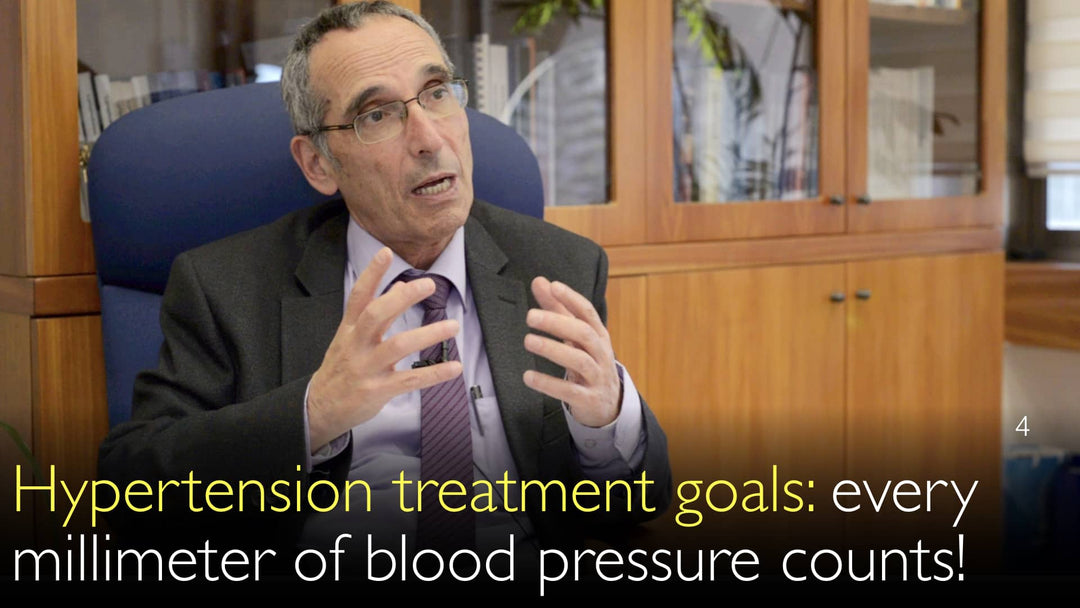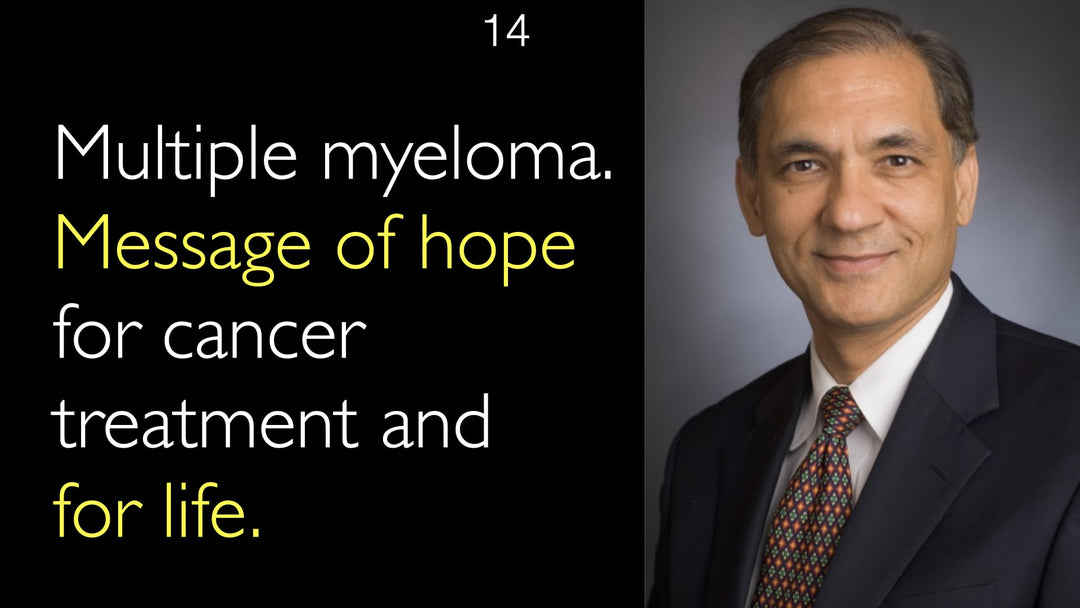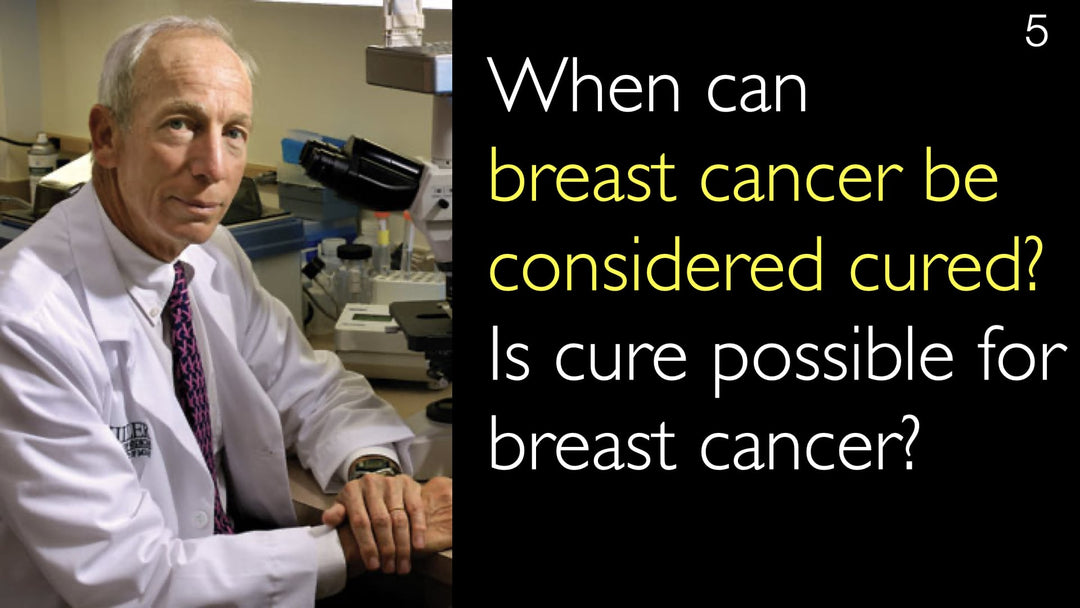O renomado especialista em hipertensão e risco cardiovascular, Dr. Ehud Grossman, destaca a importância crucial do controle da pressão arterial. Ele detalha como cada milímetro de mercúrio de redução na pressão arterial diminui significativamente o risco de infarto e acidente vascular cerebral. Dr. Grossman aborda o delicado equilíbrio entre os benefícios do tratamento e os efeitos colaterais da medicação no manejo personalizado da hipertensão. Ele ressalta que, embora as diretrizes de tratamento ofereçam orientação, as decisões devem ser individualizadas, priorizando as necessidades de cada paciente.
Otimização das Metas de Pressão Arterial para Prevenir Infarto e AVC
Ir para a Seção
- Risco Cardiovascular na Hipertensão e Diabetes
- Benefícios da Redução da Pressão Arterial
- Tratamento Personalizado da Hipertensão
- Diretrizes versus Decisões Individuais
- Papel do Paciente nas Decisões de Tratamento
- Transcrição Completa
Risco Cardiovascular na Hipertensão e Diabetes
O Dr. Ehud Grossman destaca a forte relação entre hipertensão e diabetes. Pacientes com ambas as condições apresentam um risco cardiovascular equivalente ao de quem já sofreu um infarto. Esse perfil de alto risco exige, muitas vezes, tratamentos preventivos agressivos em diabéticos, incluindo o uso de aspirina e medicamentos para reduzir o colesterol, semelhantes às estratégias de prevenção secundária.
Benefícios da Redução da Pressão Arterial
O Dr. Ehud Grossman ressalta que cada ponto na pressão arterial faz diferença. Uma diferença de 20 mmHg na pressão sistólica ou 10 mmHg na diastólica pode dobrar o risco de eventos cardiovasculares. Por exemplo, uma diferença de 80 mmHg eleva o risco em dez vezes. O benefício da redução não é linear: os maiores ganhos ocorrem ao baixar pressões muito elevadas. Reduzir de 180 para 140 mmHg na sistólica oferece uma queda substancial no risco. Diminuir ainda mais, de 140 para 130 mmHg, traz benefícios menores e incrementais.
Tratamento Personalizado da Hipertensão
O Dr. Ehud Grossman explica que o tratamento da hipertensão é a essência da medicina personalizada. Os médicos devem equilibrar o benefício de cada redução da pressão com os possíveis efeitos colaterais dos medicamentos. Esse processo é altamente individual, dependendo da pressão arterial inicial, do estado geral de saúde e da tolerância do paciente aos remédios. O objetivo é alcançar o melhor resultado com a menor carga de efeitos adversos.
Diretrizes versus Decisões Individuais
As diretrizes de tratamento da hipertensão oferecem uma base importante para o cuidado, mas, como o Dr. Grossman esclarece, não são regras rígidas. Elas indicam um caminho, mas a trajetória é única para cada paciente. O julgamento clínico do médico é fundamental ao aplicar essas recomendações. O Dr. Anton Titov facilita essa discussão, explorando as nuances da prática clínica além do que está publicado.
Papel do Paciente nas Decisões de Tratamento
O Dr. Ehud Grossman defende veementemente a tomada de decisão compartilhada no tratamento da hipertensão. O paciente é um parceiro central em seu próprio cuidado. Os médicos devem explicar claramente os benefícios de metas mais baixas de pressão arterial e discutir abertamente os possíveis efeitos colaterais dos medicamentos. Cabe ao paciente, após compreender riscos e benefícios, decidir seu caminho de tratamento. Essa abordagem colaborativa garante planos eficazes e sustentáveis.
Transcrição Completa
Dr. Ehud Grossman, MD: É uma estatística muito interessante: em pessoas com diabetes, ter hipertensão significa um risco cardiovascular equivalente ao de quem já teve um infarto do miocárdio.
Exato! Estudos antigos já mostravam que o risco de infarto e AVC em pacientes com diabetes é muito maior do que na população geral. De certa forma, ter diabetes já é como estar em "prevenção secundária", pois o risco é tão alto quanto o de alguém que já infartou.
Por isso, embora nem todas as diretrizes concordem, algumas recomendam que diabéticos sejam tratados com aspirina e medicamentos para baixar o colesterol, assim como quem já teve infarto.
Também é interessante notar que, quando falamos de pressão arterial, diferenças de 10 mmHg podem parecer pequenas para muitos, mas na verdade são muito significativas!
Claro que são. Ao considerar o indivíduo, não é a mesma coisa que analisar um milhão de pessoas e ver a diferença na ocorrência de eventos quando a pressão cai 10 mmHg.
A cada 20 mmHg na pressão sistólica e 10 mmHg na diastólica, o risco de infarto e AVC dobra. Se um paciente tem pressão sistólica de 115 mmHg e outro tem 195 mmHg—uma diferença de 80 mmHg—o risco é dez vezes maior, o que é enorme.
Portanto, fica claro que uma diferença de 10 mmHg na pressão arterial importa. Para o indivíduo, pode variar, mas em termos populacionais, cada ponto na pressão arterial conta.
Não existe "diferença insignificante" na pressão arterial. As pessoas devem realmente buscar atingir as metas de tratamento adequadas ao seu perfil de risco.
A questão é que a curva de benefício não é linear. Ao baixar de 180 para 160 mmHg, uma redução de 20 mmHg traz um declínio significativo no risco de eventos, mas ao passar de 140 para 120 mmHg, o benefício adicional é menor.
Ou seja, o impacto de 20 mmHg depende de onde se começa e para onde se vai. É por isso que dizemos que, ao chegar a 140 mmHg, a maior parte do benefício já foi obtida ao reduzir de 180 para 140 mmHg na sistólica.
Agora, qual é o benefício adicional de baixar de 140 para 130 mmHg? Existe, mas é pequeno, e então avaliamos o "custo"—não em dinheiro, mas em efeitos colaterais dos medicamentos.
É preciso ponderar se vale a pena reduzir mais 10 mmHg e expor o paciente a possíveis efeitos adversos. Isso é medicina personalizada—a diferença entre um grande estudo com milhões de pessoas e o tratamento de um paciente específico.
Ao tratar um indivíduo, é preciso equilibrar benefícios e desvantagens. Por isso as diretrizes de hipertensão são tão complexas. Há amplo espaço para decisões personalizadas pelo médico.
Sem dúvida! As diretrizes dão uma direção, mas caberá ao médico—e ao paciente—decidir como seguir. É preciso explicar ao paciente a situação, os possíveis efeitos colaterais e os benefícios, para que ele participe da decisão do tratamento.








